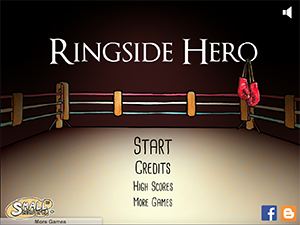The Bible, still nowadays “is the most published and translated book in the world”[1]; it is studied not only in theological departments or faculties but also in literature and humanities departments.
In this paper I shall illustrate why reading and studying the Old Testament is useful for Christian believers. I lay out my reasoning in three sections: the first and longest section discusses the question from a historic, literary and sociological viewpoint, illustrating how knowledge of the Old Testament equips us to better understand certain things described in the New Testament; the second and shortest section is more strictly focused on what Jesus himself said or did; the third consists of an interpretation of the first two sections and my conclusions.
Testament, or covenant, means a mutually binding agreement.[2] I shall discuss this in greater detail in the third section of this essay. The first writer “to speak unequivocally of a ‘New’ Testament parallel to the Old was Irenaeus.”[3] The Old Testament – or the “Hebrew Bible”, as Smith-Christopher prefers to call it[4] – is part of the (Christian) Bible. The latter is a “holy” collection of papers – the canon – which, for both Jews and Christians, is “closed”: meaning that nothing can be added to or removed from it. Believers think that these books have been inspired by God.[5]
For Catholics the Bible consists of 73 scriptures divided between the Old Testament (46) and the New Testament (27). The number of books in the Hebrew Bible is 24: although this seems quite different to the Old Testament (OT), the Jewish Tanakh is in reality very similar, the difference in number due to dissimilar groupings and divisions.
Compared to the Tanakh, the OT has seven extra books plus some extra bits in Esther and Daniel.[6] While the Jews order their scriptures in descending order, that is to say they begin with the most important section (Torah, the Pentateuch for Christians), pass through the history of Israel and the Prophets (Nebiìm), and end with the less important Ketuvim (other writings), the Christians have arranged the scriptures in an ascending order, building to the advent of the Messiah, whose story is then told in the New Testament (NT), a new collection placed after the OT. Hence for Christians the New Testament is the most important and interesting part. However, this does not mean that what comes before is not significant or that it need not be read or studied; quite the opposite and in the rest of this essay we are going to see why this is.
Historically, not everyone has always agreed on the usefulness (for a Christian) to read the Hebrew Bible. In the second century A.D., Marcion and his followers “found the Old Testament impossible to reconcile with the gospel of Christ. The legalism and strict justice of the one, he thought, and the grace and redeeming love revealed in the other, stood for two antithetically opposed conceptions of religion.” This “led him to reject the Old Testament”.[7]
However the mainstream view is that in the Old Testament lays the roots of Christianity. For instance, it contains the Decalogue (twice: once in Exodus and once in Deuteronomy): the ten fundamental commandments for Abrahamic religions. The OT gives Christianity even more ancient roots and a rich historical background. Reading the OT we learn that the Jews in those ancient times were expecting a Messiah; for the Christians, this is Jesus (more on this in the third section of this essay).
Additionally, having knowledge of the Old Testament equips the reader to better appreciate some themes and concepts that are in the NT, such as: immortality, after-life, resurrection, “son of man” (expression used in Daniel and seized by the writers of the NT in reference to Jesus)[8] and the expectations of a messiah. Likewise in the NT there are references to Jewish customs and to the OT: knowing the Hebrew Bible gives us a better understanding of these references. Let us look at a few of them.
We can learn that the angelic visitation followed by birth is not something that happens to Mary only (in the NT), but that it had already happened to Sarah and Abraham and then to Samson.[9] Without knowledge of the OT it is difficult to grasp the transfiguration on Mt Tabor (Mt. 17: 1-13; Mk. 9: 2-13; Luke 9: 28-36) or the meaning of the three tents for Jesus, Moses and Elijah. Similarly, Jesus’ death is described in language and images borrowed from the book of Exodus.[10]
Knowing the OT, we are able to understand the parallels between the life of Jeremiah and Jesus[11] and appreciate that the image of the Good Shepherd, dear to the writers of the NT (in the Gospels but also in the Epistle to the Hebrews, the First Epistle of Peter, and the Book of Revelation), came in fact from Ezekiel.[12] Ezekiel and other authors of the OT also spoke of “the ‘impossible’ New Temple … and the poems of an ideal Israel as God’s servant, accepting its suffering and death to save God’s world… The New Testament writers will quote these pieces frequently to describe their experience of Jesus”.[13] Furthermore, without knowing the more ancient texts one could not understand the resemblance between the image of the prophet Elias and John the Baptist, including the similitude of their connection with the Jordan river.
Some Christian rites or sayings derive from Jewish ones. Examples include: the last supper in the Easter period and the Eucharist have their roots in the Jewish celebrations of the Passover[14], whilst the expression “Lamb of God” comes from the ritual sacrifice of lambs by Hebrews and takes a new meaning with Christ sacrificing himself to save humanity, freeing Christians of such sacrificial rites.
We have seen how knowledge of the Old Testament can help us to give a fuller meaning to NT stories. In the following section we shall see how knowledge of the Old Testament can help us to better understand the words and deeds of Jesus himself.
I shall begin by stating that Jesus and his apostles were Jews, hence the Hebrew Bible was important to them, it was part of their lives. Leo Baeck, in his long essay, The Gospel as a Document of Jewish Religious History (1938) gave “a characterisation of Jesus and his disciples as thoroughly Jewish.”[15]
Initially, Christianity was considered a sect of Judaism (Acts 24: 5). Jesus’s core teachings were not a break from Jewish beliefs and, in fact, many Jews embraced Jesus as the Messiah of the ancient Jewish texts. In effect, a number of scholars argue that there was no clear distinction between being Christians and being Jewish prior to the fifth century; i.e., the clearly distinguished identities we know today did not necessarily always exist.[16]
“What Jesus preached was the God he found in the Old Testament.”[17] Jesus himself, in the NT, mentions elements and sayings taken from the Old Testament. We will have difficulty grasping their full meaning without knowledge of the latter.[18]
Jesus used the Psalms as his prayers. They are part of the Old Testament, and while the NT makes reference to them, they are too brief to convey their full meaning without going back to the OT. He spoke about a God, Yahweh, whom he called “father” (Mk. 3: 31-34; Mt. 12: 46-50; Luke 8: 19-21), the very same God of the Hebrew Bible. He made references to the OT, for instance: “… the Law or the Prophets; I have not come to abolish them but to fulfil them” (Mt. 5: 17-20) and “Moses permitted you to divorce your wives because …” (Mt. 19: 8) showing that his beliefs were based on these ancient scriptures and that we need to go back to them to fully appreciate what he was saying.
In the following third section, we shall consider the power of Christian interpretation of the Hebrew Bible; something like an earlier exegesis – or, as Towey calls it, hermeneutics – with “the subsequent interpretation of key biblical texts in later Christian thinking.”[19] Christians, from the start, gave a new meaning to the texts of the Old Testament, thus these books came to be included in their religious tradition since the beginning of Christian history. Over time, these interpretations diverged further from the original Hebrew tradition.
The Bible presents the history of salvation in two phases: 1) before Christ and 2) after Christ. Of course for Christians there is an interpretation of “the ‘Old’ Testament in the light of the Jesus event.”[20] Those who theologised about Jesus (the authors of the NT) “drew conclusions about who he was, and what had been accomplished by him, using vocabulary and symbolism drawn from their original Jewish religious beliefs.”[21]
The Old Testament is about the “old covenant” between God and his people whilst the New Testament is about the “new covenant” enacted by the intercession of Jesus on behalf of humanity with the same God.[22] Hence it is a linear story: it is the same God that has revealed himself throughout history; there is a cultural and historical continuation between the Old Testament and the New Testament. Of course Christians read the Hebrew Bible through Christian lenses and give their reading to themes such as salvation and the messiah.[23]
From a theological point of view, the new reading of the OT and the addition of the NT have meant that the Christians have replaced some items of the Hebrew faith with others. Examples include: Israel as the chosen people of God based on Abraham’s descent is substituted by the Church, as the new people of God, based on the faith in Christ; and we go from the liberation of people from slavery in Egypt to the sacrifice of Christ as liberation of believers from the slavery of sin.[24]
In this work we have seen that the Old Testament is important for Christians to have a deeper understanding of their own beliefs and of the words and actions of Jesus. We have also seen that, with the minor differences highlighted in this essay, it is also the holy text of the Jewish religion. Pope John Paul II, on 13 April 1986, called the Jews “our elder brothers”[25]: this signifies the importance that Catholics give to the Hebrew Testament and in fact, this is where we will find the roots of Christianity.
To conclude on an ecumenical note, as Dr Elena Lea Bartolini says,[26] “going back to the scriptures is the way to find common ground for the various Christian denominations”: hence the Old Testament is vitally important for Christians, also as a way to strengthen dialogue and unity among them.
Short essay by: Volfango Rizzi
Copyreader: Robert Burns (ceresetta@libero.it)
[1] Bonelli (2019): 1.
As some of the texts I have read are in Italian, the translation of such quotes is mine. Further note: In this essay, the passages of the Bible are referenced within the text, whilst, to limit the number of words, other readings are referenced as footnotes.
[2] Towey (2018): 35.
[3] Kelly, J. N .D. (1976): 56.
[4] Hayes & Gearon (1998): 41.
[5] On the Bible as inspiration of God, one can read, for example, Carinoni, Casinotti & Airoldi (1997): 107-108 and, for “the Bible as revelation of God”: Cionchi (1990): 81-82.
[6] Bonelli (2019): 42-43.
[7] Kelly (1976): 57.
[8] Richards (2002): 19.
[9] Towey (2018): 37.
[10] Richards (2002): 20.
[11] Harris (2019): 27.
[12] Ibid. 32.
[13] Richards (2002): 21.
[14] Harris (2019): 6 and Richards (2002): 20.
[15] Keck (2001): p. 38.
[16] Daniel Boyarin, in The Gospels: The Story of the Jewish Christ, makes the powerful case that the conventional understandings of Jesus and the origins of Christianity are different from how we now think. More on this topic can be read in Brunetto Salvarani (2014) in section 2, IL PROTOSCISMA, PECCATO ORIGINALE and following 12 pages.
[17] Richards (2002): 12.
[18] Harris (2019): 43.
[19] Towey (2018): 35.
[20] Towey (2018): 35.
[21] Ibid.
[22] Richards (2002): 20 and Harris (2019): 27.
[23] A very good work on these two topics is Cionchi (1990): 94-103.
[24] CEI (1999): 112.
[25] Villata & Panero: 125-126.
[26] Lecture given on 11 January 2020 at the Istituto Superiore di Scienze Religiose in Milan.
Bibliography & References:
La Bibbia: nuovissima versione dai testi originali. Edizioni Paoline.
The Bible: https://www.catholic.org/ [accessed on several occasions starting from 20th October 2019].
Harris Heather & Chris (2019). The Old Testament. LifeLight Home Study Courses.
Bellandi A, Chierici S, Cimatti A, Dal Pane E (2012). Videro e credettero. La bellezza e la gioia di essere cristiani. Itaca.
Bonelli, Massimo (2019). Introduzione generale alla Bibbia. ISSR Milan.
Boyarin Daniel (2004). The Christian Invention of Judaism: The Theodosian Empire and the Rabbinic Refusal of Religion in Representations, No. 85 (Winter, 2004), pp. 21-57. University of California Press.
Boyarin Daniel (2012). Il Vangelo ebraico. Le vere origini del cristianesimo. Castelvecchi.
Cionchi G. (1990). Studiare Religione Vol. 2. Editrice Elle Di Ci.
Gibellini R, Gillini G, Rota Scalabrini P, Zattoni M. (1997). Alternativa: Corso di Religione Cattolica. Editrice Queriniana.
Hayes M. A. & Gearon L. (editors). Contemporary Catholic Theology: a Reader. Gracewing.
Keck Leander E. (2001). Who is Jesus?: History in Perfect Tense. Fortress Press.
Kelly, J.N.D. (1976). Early Christian Doctrines: revised edition. HarperOne.
Marinoni G, Cassinotti C, Airoldi G. (1995). La domanda dell’uomo – per il biennio. Petrini Editore.
Marinoni G, Cassinotti C, Airoldi G. (1997). La domanda dell’uomo – per il triennio. Petrini Editore.
Notiziario dell’Ufficio Catechistico Nazionale n.2 August 1999. Quaderni CEI (Conferenza Episcopale Italiana).
Richards Clare (2002). introducing catholic theology. Kevin Mayhew Ltd.
Salvarani, Brunetto (2014). Non possiamo non dirci ecumenici. Dalla frattura con Israele al futuro comune delle chiese cristiane. Gabrielli Editore.
Towey Anthony (2018). An Introduction to Christian Theology (2nd Ed). Bloomsbury.
Villata Giovanni & Maranda Luciano Panero (1991). Verso la città della gioia. Piemme.
Short essay by: Volfango Rizzi
Copyreader: Robert Burns (ceresetta@libero.it)










 è una rivista bimestrale, che tratta esplicitamente di scacchi, rugby, pugilato e scacchi-pugilato.
Include, inoltre, la rubrica “altro”, in cui, in aggiunta a temi come l’aromaterapia e i giochi, viene offerta la
possibilità di sviluppare, in maniera coinvolgente, vari argomenti d’interesse generale.
è una rivista bimestrale, che tratta esplicitamente di scacchi, rugby, pugilato e scacchi-pugilato.
Include, inoltre, la rubrica “altro”, in cui, in aggiunta a temi come l’aromaterapia e i giochi, viene offerta la
possibilità di sviluppare, in maniera coinvolgente, vari argomenti d’interesse generale.








COMMENTI RECENTI